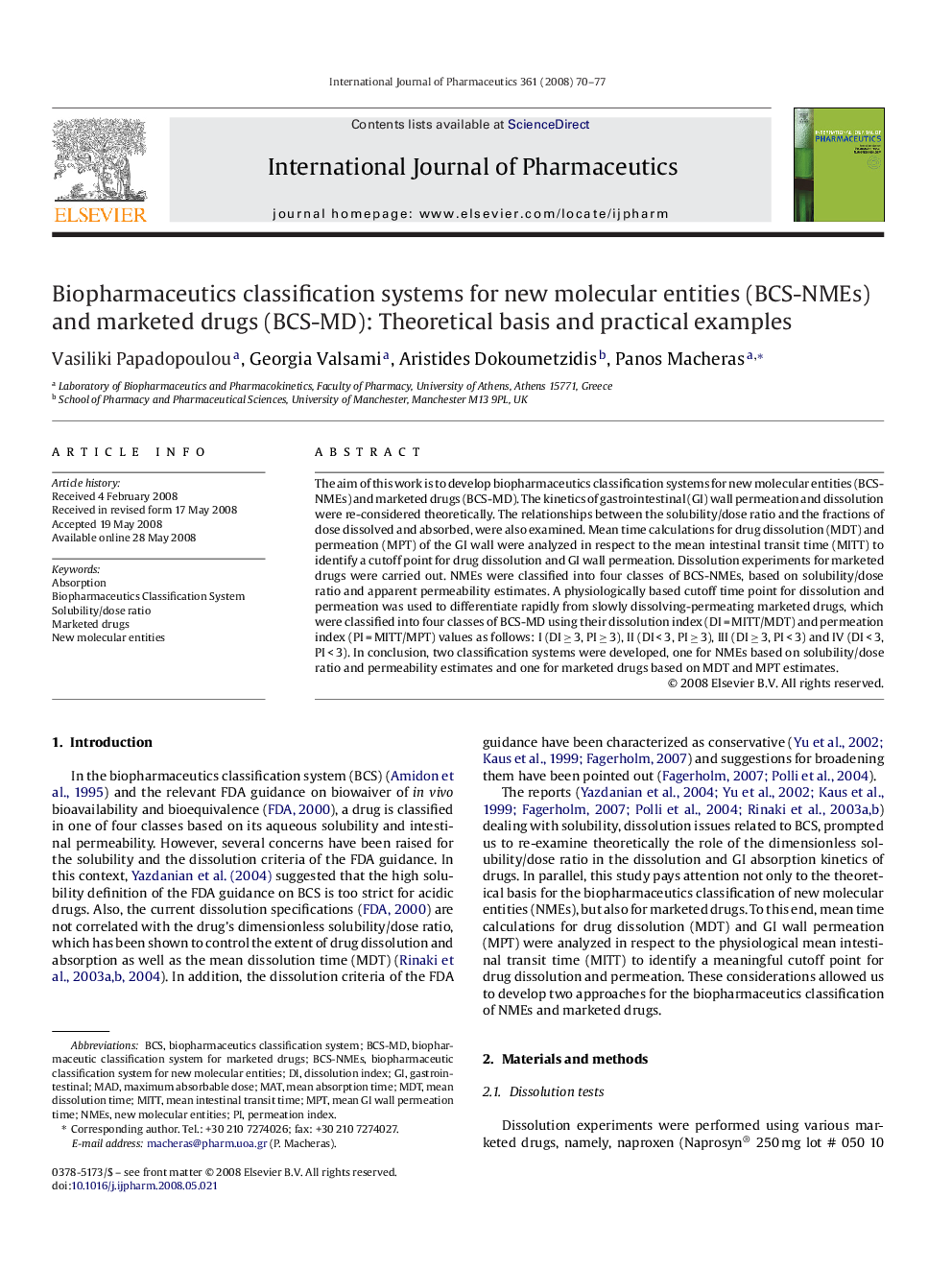| Article ID | Journal | Published Year | Pages | File Type |
|---|---|---|---|---|
| 2505238 | International Journal of Pharmaceutics | 2008 | 8 Pages |
The aim of this work is to develop biopharmaceutics classification systems for new molecular entities (BCS-NMEs) and marketed drugs (BCS-MD). The kinetics of gastrointestinal (GI) wall permeation and dissolution were re-considered theoretically. The relationships between the solubility/dose ratio and the fractions of dose dissolved and absorbed, were also examined. Mean time calculations for drug dissolution (MDT) and permeation (MPT) of the GI wall were analyzed in respect to the mean intestinal transit time (MITT) to identify a cutoff point for drug dissolution and GI wall permeation. Dissolution experiments for marketed drugs were carried out. NMEs were classified into four classes of BCS-NMEs, based on solubility/dose ratio and apparent permeability estimates. A physiologically based cutoff time point for dissolution and permeation was used to differentiate rapidly from slowly dissolving-permeating marketed drugs, which were classified into four classes of BCS-MD using their dissolution index (DI = MITT/MDT) and permeation index (PI = MITT/MPT) values as follows: I (DI ≥ 3, PI ≥ 3), II (DI < 3, PI ≥ 3), III (DI ≥ 3, PI < 3) and IV (DI < 3, PI < 3). In conclusion, two classification systems were developed, one for NMEs based on solubility/dose ratio and permeability estimates and one for marketed drugs based on MDT and MPT estimates.
